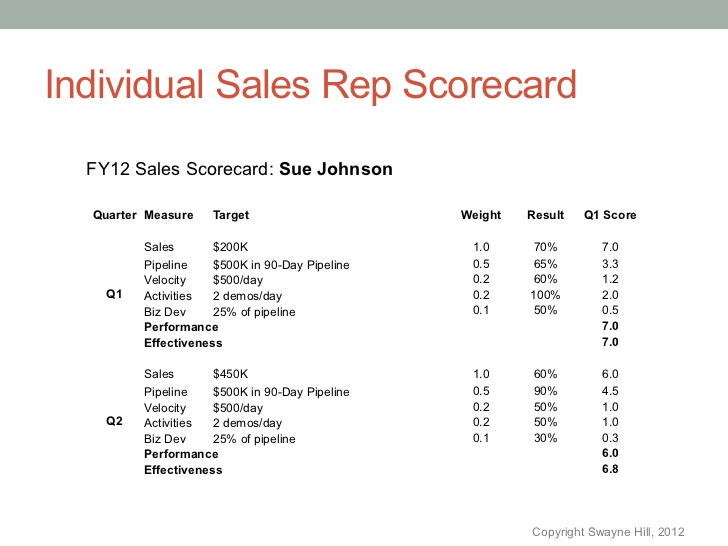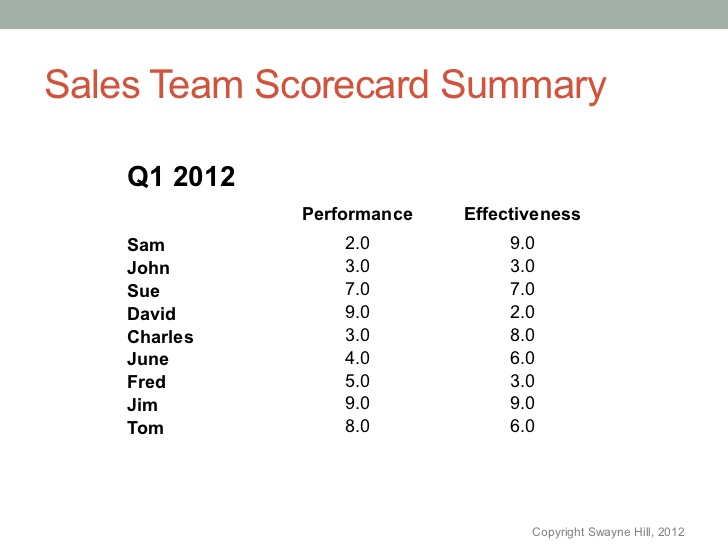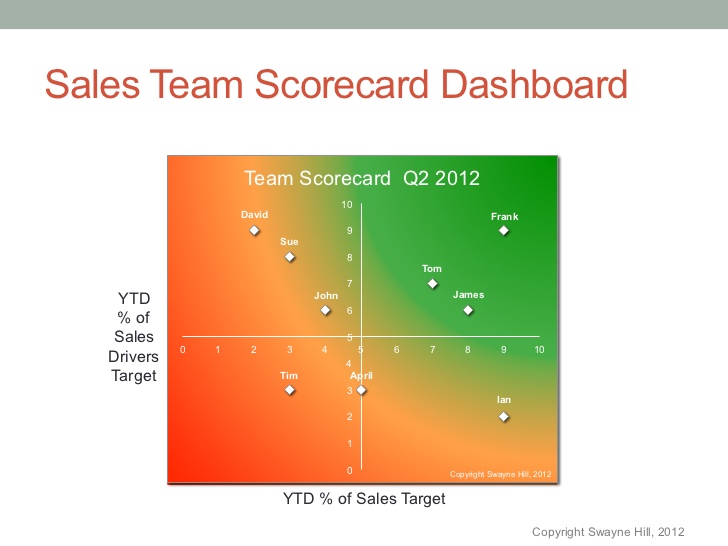Topics:
Inbound SalesSubscribe now and get the latest podcast releases delivered straight to your inbox.
 The best sales teams are results-driven, but you can't inspire results from your sales reps if you're not keeping score.
The best sales teams are results-driven, but you can't inspire results from your sales reps if you're not keeping score.
Sales scorecards are great tools for keeping your sales reps accountable, evaluating your sales process, identifying top performers, and creating healthy competition.
Not keeping score in your sales department is the same as not keeping score in sports -- a waste of time.
Although competition in the workplace can be toxic to the wrong people, the best sales reps are always motivated by competition, even if it's just competition with themselves. Employees and companies that aren't focused on results have a tendency not to produce any.
Sales scorecards challenge the individual employees and the company as a whole to create an environment and process where sales reps can thrive and most importantly, it keeps everyone focused on the bottom line.
Answer the Tough Questions
Your sales scorecard needs to answer the tough questions so you can thoroughly assess where you are and what areas need improving to increase your sales.
Examples of questions you should answer include:
- How are my sales reps performing and will they hit their goals?
- Is our sales process continually improving performance?
- What our my top performers doing to close sales?
- Are we gathering insights and using them to increase sales opportunities?
- Are we generating enough leads and are the leads qualified?
A sales scorecard not only tracks the performance of your individual salespeople, but it also allows you to look at the big picture of your sales process.
Sales success requires great sales people in a great system. You can get by with one or the other, but top performers can only do so much with a broken process and most likely won't stick around.
Set Your Sales Targets
What are your sales goals?
You have to identify sales targets, usually by quarter, to have a standard for measuring performance.
Most sales scorecards will include two types of targets: performance and effectiveness.
Performance targets are quotas, a quantity of sales in total dollar value, or a number of units sold. On the other hand, effectiveness targets measure how your sales people do their job.
You need both to see the full picture.
There will be times when a member of your sales team is doing all of the right things, but for whatever reason their numbers don't reflect it. It could be bad luck or they might just need a little more practice. However, the potential is there.
Then there are times when a member of your sales team is performing well, but overall they aren't very effective.
In this scenario, they could be lucky, they might have hit their quota with the help of one very large account, or they could be using questionable (and unethical) methods that you don't know about. Either way, their performance undermines your sales process and sets a bad example to other members of the sales team.
Over time, the top performers will also be the most effective and vice versa.
Determine Your Sales KPIs
To get the full picture of how your sales team is doing, you will need to determine which key performance indicators you are going to track and measure.
Sales KPIs include:
- Sales: This is the total sales quota that you'd like your sales team to hit that quarter.
- Pipeline: An amount that is maintained in the pipeline over a given period of time (usually 90 days).
- Velocity: The velocity takes all of the effectiveness KPIs into consideration to determine the daily performance required to meet the yearly performance target.
- Business Development: The percentage of new business sourced by the sales rep.
- Win Rate: The percentage of leads that your sales rep converts to sales.
- Selling Time: The average length of time to close a sale from the initial contact.
- Deal Size: The average revenue per sale.
- Number of Leads Assigned: The total number of sales opportunities your rep was given.
- Number of Phone Calls: The total phone calls your sales rep made.
- Activities: Meetings, sales demos, or other events relevant to your sales process.
Outside of the total sales, all of the other KPIs measure effectiveness and sales behavior. It's important to include as many of these as you feel are relevant to your sales process.
Each score will be weighted based on the value that you determine by deciding which KPIs have the biggest and smallest impacts on your total sales performance.
Summarize and Evaluate Performance
The actual visual presentation of your summary will depend on what software you're using. For the purpose of having a visual aid, I'll be using the model developed by Swayne Hill that he has presented in this Slideshare.

You'll notice that he assigned a weighted value of 1 to sales performance while the other metrics that measure effectiveness have a total summarized value of 1. He did this for simplicity and for charting purposes, which you'll see below.
However, you may choose your own combination of metrics and weight values.
At a quick glance, the scorecard above clearly indicates the overall performance and effectiveness of the sales rep based on five KPIs: sales, pipeline, velocity, activities, and business development.

Your sales team scorecard lets you quickly identify your best and worst sales people. In the image above, Hill lists the performance and effectiveness scores of each sales rep.

Using this dashboard, Hill has broken down the quality of his sales reps into four quadrants.The x-axis measures sales performance or the YTD percentage of the sales target. The y-axis measures sales effectiveness or the YTD percentage of the sales drivers target.
The bottom-left quadrant is sales reps that perform poorly and don't attempt to "do the right things" that make a sales rep effective. These are employees that should be let go or moved to a more suitable position in the company.
The bottom-right quadrant is sales reps that perform well, despite the fact that they aren't very effective with sales drivers. According to Hill, these sales reps are often more trouble than they're worth because of their ineffectiveness. He suggests that these reps receive a warning to increase their effectiveness and to let them go as soon as they start to move to the left on the graph.
The top-left quadrant is the sales reps that are "doing all the right things" but still haven't hit their target sales. Hill believes that managers should invest in these employees as they usually end up in the top-right quadrant after increased coaching.
The top-right quadrant is your company's top performers. They hit their targets and they're effective, which indicates that they will continue to be successful in the long-term. These are the hardest employees to hang on to because they are in high demand and require the least training.


Order Your Copy of Marcus Sheridan's New Book — Endless Customers!

